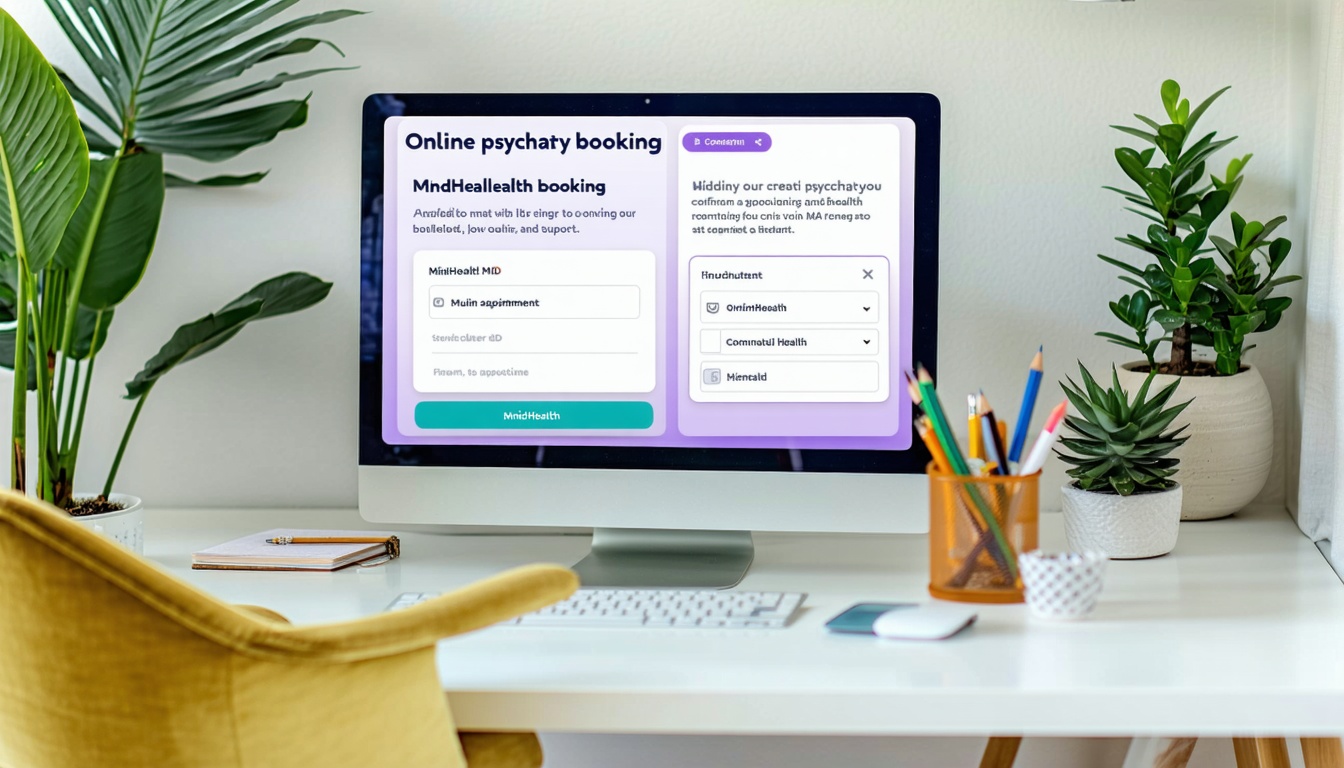Why Choose TMS for Bipolar Depression
Efficacy of TMS Therapy
Transcranial Magnetic Stimulation (TMS) is gaining recognition for its potential benefits for individuals experiencing bipolar depression. Many people seeking alternatives to traditional therapies are finding TMS an appealing option. Research suggests that TMS may provide relief for those who haven’t found improvement with medications alone, enhancing their overall quality of life [1].
Studies indicate that TMS may be particularly effective in treating both acute phases and maintenance phases of bipolar depression. However, evidence regarding its effectiveness as a stand-alone treatment and in relation to mania requires more exploration due to variations in study methodologies and patient demographics [2].
A summary of TMS therapy effectiveness in bipolar depression is as follows:
| Study Focus | Efficacy |
|---|---|
| Augmentation of treatment | Yes, for acute and maintenance phases |
| Monotherapy effectiveness | Conflicting evidence |
| No treatment-emergent mania | Observed with deep transcranial magnetic stimulation |
If you’re considering TMS therapy, it’s essential to consult with a qualified TMS therapy provider to determine if it’s the right fit for you.
Safety Considerations of TMS
Safety is a crucial aspect when considering any treatment. TMS therapy is a non-invasive procedure that uses magnetic fields to stimulate specific regions of the brain, which has led to its growing reputation as a safe alternative to traditional depression treatments. The procedure is generally well-tolerated, and serious side effects are rare.
For context, here’s a table highlighting the common and rare side effects associated with TMS therapy:
| Type of Side Effect | Frequency |
|---|---|
| Headaches | Common |
| Scalp discomfort | Common |
| Mild dizziness | Common |
| Treatment-emergent mania switch | Rare |
| Seizures (in very rare cases) | Extremely rare |
TMS is regarded as preferable compared to other treatment options due to its lower risk profile and the absence of systemic side effects that are often associated with medications. It’s essential to talk to your healthcare provider about any concerns you may have regarding TMS therapy and its safety.
Transitioning to TMS may be a beneficial consideration if you or a loved one are exploring treatment options for bipolar depression. Don’t hesitate to reach out to a certified professional to discuss your options and get personalized guidance.
Understanding TMS Treatment
Transcranial Magnetic Stimulation (TMS) is an innovative treatment option for conditions like bipolar depression. MindHealth MD adheres to proven protocols that maximize efficacy while ensuring safety. Here, you will learn about the Standard rTMS Protocol and the innovative SAINT-iTBS Protocol.
Standard rTMS Protocol
The standard repetitive Transcranial Magnetic Stimulation (rTMS) protocol involves the delivery of magnetic pulses that stimulate areas of the brain associated with mood regulation. Studies have shown that combining rTMS with psychotherapy yields favorable results, with response rates of approximately 66% and remission rates around 55% for patients dealing with depression [4].
The standard protocol typically consists of daily sessions conducted five times a week for a duration of 4 to 6 weeks. Each session lasts about 20 to 40 minutes. The goal is to gradually relieve symptoms, leading to a more stable and lasting improvement in mood.
| Treatment Aspect | Details |
|---|---|
| Response Rates | ~66% |
| Remission Rates | ~55% |
| Treatment Duration | 4 to 6 weeks |
| Sessions per Week | 5 sessions |
| Session Duration | 20 to 40 minutes |
Innovative SAINT-iTBS Protocol
The SAINT-iTBS (Stanford Accelerated Intelligent Neuromodulation Therapy – intermittent theta burst stimulation) represents an advanced approach to TMS treatment. In a double-blind randomized controlled trial, about 85.7% of patients receiving this protocol responded positively to treatment, with around 78.6% achieving remission criteria. Impressively, 60% of patients maintained remission after one month.
The SAINT-iTBS protocol is characterized by its accelerated treatment delivery, consisting of shorter sessions with burst stimulation, making it both efficient and effective. Patients benefit from fewer overall treatment sessions compared to standard rTMS, while still achieving significant therapeutic outcomes.
| Treatment Aspect | Details |
|---|---|
| Response Rates | ~85.7% |
| Remission Rates | ~78.6% |
| Maintained Remission | ~60% after one month |
By understanding both the Standard rTMS and innovative SAINT-iTBS protocols, you can make an informed decision regarding TMS for bipolar depression. For further insights on TMS methodologies and the benefits they offer, consider exploring MindHealth MD’s transcranial magnetic stimulation therapy services.
Side Effects of TMS
When considering TMS for bipolar depression, it’s important to understand the potential side effects associated with this treatment. While many individuals benefit greatly from TMS therapy, being informed can help ease any concerns.
Common Side Effects
The most frequently reported side effects of TMS therapy include mild headaches, localized pain during treatment, and scalp discomfort. Approximately one-third of patients experience these symptoms at some stage during their sessions. Other common effects may involve temporary changes in hearing or lightheadedness. While these side effects can be uncomfortable, they tend to diminish as treatments progress.
| Side Effect | Occurrence |
|---|---|
| Headaches | About 33% of patients |
| Localized pain | About 33% of patients |
| Scalp discomfort | Mild discomfort reported |
| Hearing changes | Mild alterations noted |
If you experience any of these side effects, it is essential to discuss them with your TMS therapy provider, who can help manage your symptoms effectively.
Rare but Serious Risks
Though rare, some serious risks are associated with TMS therapy. Seizures, for example, are a potential but uncommon side effect, occurring in fewer than 3 patients per 100,000 sessions. This risk is more prevalent among individuals with a history of seizures or certain neuropsychiatric disorders [4].
Additionally, certain patients, especially those with bipolar disorder, may experience temporary acute psychological changes such as exaggerated mood swings or manic episodes. These psychiatric alterations usually subside soon after treatment concludes.
It’s crucial to weigh these risks against the potential benefits when considering TMS therapy for bipolar depression. Understanding both common side effects and rare risks can help you make an informed decision about your mental health treatment options. For more information on the advantages of TMS compared to traditional treatments, check our article on non-invasive depression treatment or reach out to a TMS therapy provider for personalized guidance.
TMS for Bipolar Depression
Response Rates in Bipolar Patients
When considering TMS for bipolar depression, response rates demonstrate a promising potential for those struggling with this condition. A retrospective analysis of 39 patients treated with transcranial magnetic stimulation (TMS) revealed a response rate of 77% [6]. This data suggests that a significant number of individuals with bipolar depression may benefit from TMS therapy.
Moreover, the innovative SAINT-iTBS protocol, which is an accelerated form of TMS, showed even more impressive results. In a double-blind randomized controlled trial, approximately 85.7% of patients responded positively to the treatment, indicating a strong efficacy in managing bipolar symptoms [4].
| Study Type | Response Rate (%) |
|---|---|
| Retrospective Analysis | 77 |
| Double-Blind Trial (SAINT-iTBS) | 85.7 |
Remission Rates and Factors
In addition to response rates, remission rates are crucial to consider when evaluating TMS for bipolar depression. The aforementioned double-blind trial demonstrated that around 78.6% of patients reached remission criteria. Notably, 60% of these patients maintained their remission one month later [4].
It’s important to consider that the success of TMS treatment can be influenced by several factors. The study noted that TMS is more effective when patients are adequately mood stabilized and experiencing a depressive phase at the start of treatment [6]. Therefore, ensuring a proper evaluation and stabilization period is essential for maximizing treatment success.
| Protocol | Remission Rate (%) | Maintained Remission at 1 Month (%) |
|---|---|---|
| Standard TMS | 41 | N/A |
| SAINT-iTBS | 78.6 | 60 |
TMS offers a unique, non-invasive depression treatment that can be a compelling option for those with bipolar depression seeking relief from their symptoms. If you are considering TMS therapy, seeking a qualified TMS treatment center can help determine if this advanced therapy is right for you.
TMS Compared to Traditional Treatments
When considering options for treating bipolar depression, it is crucial to explore the differences between Transcranial Magnetic Stimulation (TMS) and traditional medication methods. TMS for bipolar depression offers notable advantages that can lead to a better quality of life for many individuals.
Advantages Over Medication
TMS therapy is recognized as a non-invasive treatment approved by the FDA specifically for major depressive disorder, including its application in individuals who face bipolar depression. Recent studies have highlighted the effectiveness of TMS, particularly for those who have not responded to traditional medications. Key benefits of TMS compared to standard medication options include:
| Advantages | TMS Therapy | Traditional Medications |
|---|---|---|
| Invasiveness | Non-invasive | Invasive (may include injections) |
| Side Effects | Fewer and less severe | Potentially numerous and severe |
| Recovery Time | Quick recovery post-treatment | Varies; can take weeks to adjust |
| Dependence | No risk of addiction | Possible dependency |
| Mechanism | Targets brain areas directly | Alters neurotransmitter levels |
TMS offers a promising alternative for individuals who have not achieved relief from medications alone, showcasing substantial potential to improve overall quality of life without the associated risks often present in pharmaceutical treatments. For more details on the effectiveness of TMS, consider reading about non-invasive depression treatment.
Potential Adverse Events
While TMS presents clear advantages, understanding the potential adverse events associated with TMS is crucial for informed decision-making. Here are common and expected side effects:
| Side Effects | TMS Therapy |
|---|---|
| Headache | Mild and temporary |
| Scalp Discomfort | Some users experience mild discomfort |
| Lightheadedness | Rare, usually transient |
Adverse events related to TMS are generally mild compared to those associated with traditional medications, which may include a range of issues from weight gain to severe mood swings or withdrawal symptoms. This safety profile underscores TMS as a viable option for those struggling with tms for treatment resistant depression.
Considering TMS as an alternative can offer a new hope for individuals battling bipolar depression, especially if traditional treatments have been ineffective. If you’re curious about how TMS can fit into your treatment plan, you might want to explore our resources on drug-free depression treatment and tms treatment center.
Considerations for TMS Therapy
When considering TMS therapy for bipolar depression, understanding the specifics regarding treatment duration, frequency, and post-treatment recommendations is essential. These elements contribute significantly to the overall effectiveness of the therapy.
Treatment Duration and Frequency
The typical schedule for repetitive transcranial magnetic stimulation (rTMS) sessions involves daily treatments, five times a week, over a period of 4 to 6 weeks. This regimen allows for optimal effectiveness in addressing depression symptoms. Initial relief may occur, but it could take several weeks of consistent treatment to experience significant improvements [7].
Here’s a breakdown of the proposed treatment timeline:
| Treatment Phase | Frequency | Duration |
|---|---|---|
| Initial Sessions | Daily | 4 to 6 weeks |
| Follow-Up Sessions | As needed | Based on symptom relief |
It’s important to note that, even after completing TMS therapy, ongoing care such as medication and talk therapy may still be recommended to maintain mental health. This comprehensive approach ensures sustained improvement.
Post-Treatment Recommendations
After completing the TMS sessions, there are several key recommendations for maximizing the benefits of treatment:
-
Continue Standard Care: Engage in medication and therapy sessions as advised. This mixed-method approach helps sustain the improvements achieved through TMS.
-
Monitor Symptoms: Keep track of changes in symptoms. If there are regression signs, consult with your healthcare provider to re-evaluate the treatment plan.
-
Engage in Supportive Activities: Participate in supportive therapies or groups. These can contribute positively to your recovery process by offering emotional support.
-
Regular Follow-Ups: Schedule follow-up appointments with your TMS therapy provider to assess long-term progress and make necessary adjustments to your treatment plan.
-
Lifestyle Adjustments: Incorporate healthy lifestyle choices such as balanced nutrition, physical activity, and stress-management techniques to further enhance your mental well-being.
For more information about the efficacy and processes of TMS therapy, be sure to explore our detailed guides on transcranial magnetic stimulation therapy and additional treatments such as tms for treatment resistant depression. It’s crucial to understand how these factors play an integral role in the overall success of TMS therapy for bipolar depression.
References
- (APG Health)
- (NCBI)
- (NCBI)
- (Cognitive FX)
- (Mayo Clinic)
- (Brain Behav)
- (Mayo Clinic)
- (APG Health)








